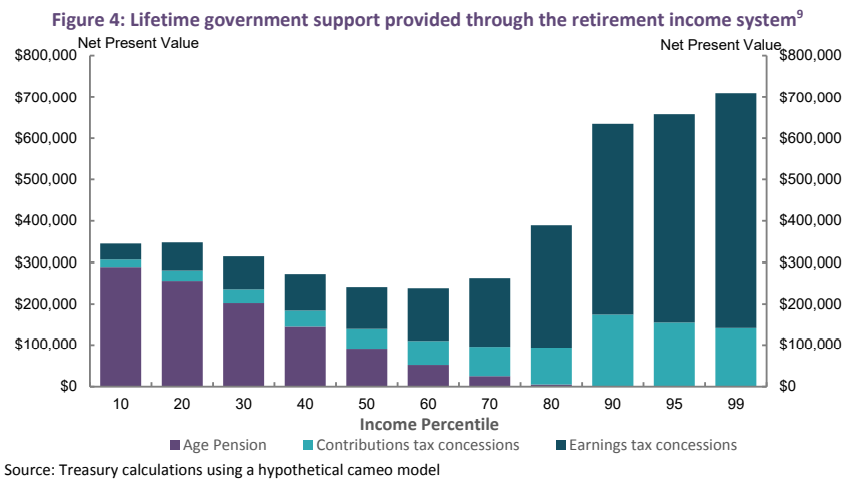Professor Deborah Ralston was a member of the Australian Treasury’s Retirement Income Review, which released its final report late last year.
Professor Ralston has published an article in The Conversation warning that lifting the compulsory superannuation guarantee (SG) to 12% would worsen the wealth imbalance between men and women by widening the retirement income gap:
Since men on average earn more than women, increasing the superannuation guarantee rate would widen — rather than narrow — the retirement income gap…
An increase in the proportion of income sent to super would lift the retirement incomes of high earners more than the retirement incomes of low earners.
Until things change, increases in compulsory super will boost the retirement incomes of men more than women.
The National Foundation for Australian Women (NFAW) also argued against lifting the SG to 12% on the grounds that it would reduce the take-home pay of low-income earners, which are more likely to be women:
“NFAW is concerned that increases in the rate of the SG may affect the take-home wages of low income earners, particularly women, who are more likely to be part-time and casual employees,” said Professor Helen Hodgson…
ACOSS’ echoed these concerns in its submission to the Retirement Incomes Review:
“The flawed system of tax concessions for super contributions should be fixed before compulsory contributions are lifted to 12 per cent”…
“For people on lower incomes, who often struggle to meet the basics of life now, the benefits are not so clear”.
For a society that is so fixated with identity politics and gender equality, it is curious that we rarely hear opposition to lifting the SG to 12%, which would disproportionately harm women.
The reason is simple. The contributory superannuation system is designed so that those that work longest and get paid the most accumulate the biggest nest eggs. Tax concessions also overwhelmingly favour higher income earners.
Therefore, we have been left with the bizarre situation whereby the overwhelming bulk of taxpayer support goes where it is needed least – i.e. higher income earners – as illustrated clearly in the below Australian Treasury chart:
This system obviously leads to men accumulating larger super balances, despite not living for as long as women.
Lifting the SG to 12% would only worsen the above inequities and worsen the retirement income gap between men and women.
The obvious solution is to direct scarce taxpayer dollars into increasing the aged pension. The pension is means tested, therefore, lower income earners (including women) are more likely to receive it than men. It is also far better targeted to those in genuine need and far more efficient from a resource allocation perspective.


